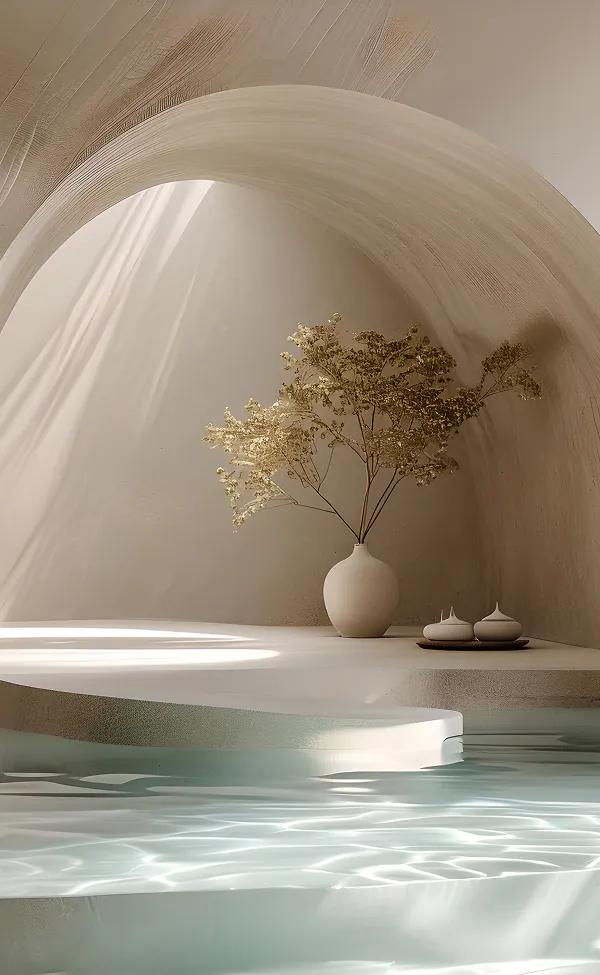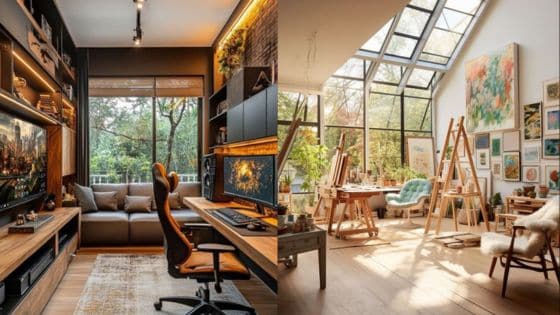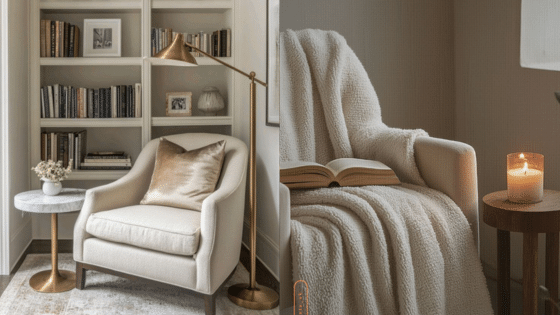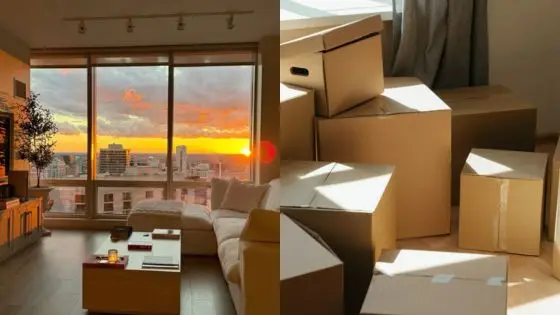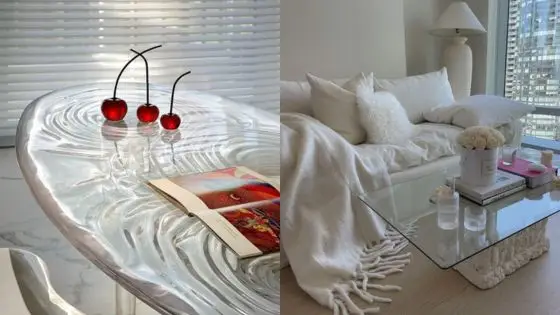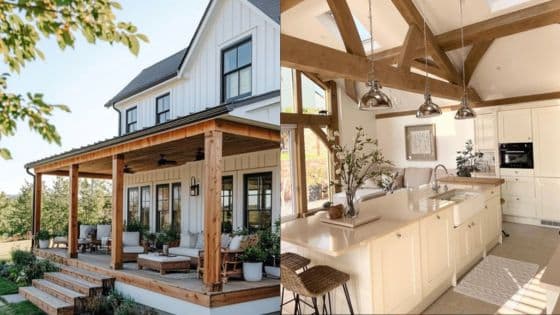Sliding glass doors are a popular choice for both residential and commercial spaces. They provide an elegant transition between indoor and outdoor areas while maximizing natural light and enhancing views. Many homeowners appreciate their aesthetic appeal as well as the functionality they bring to their living spaces.
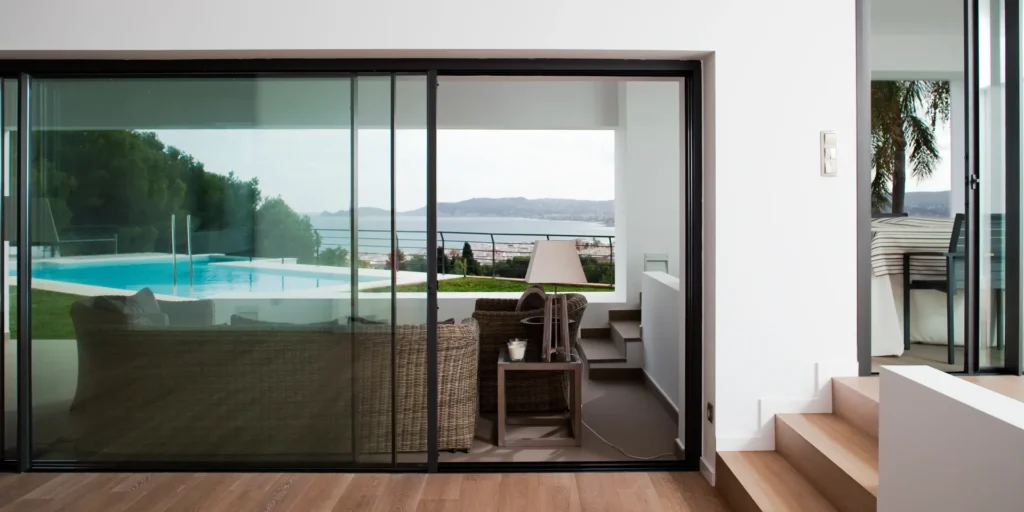
Selecting the right sliding glass door can significantly impact the overall look and efficiency of a home. Factors such as energy efficiency, security, and ease of maintenance play essential roles in the decision-making process. Understanding these aspects helps in choosing a door that not only fits the design but also meets practical needs.
The installation of sliding glass doors can transform a space, making it feel larger and more connected to nature. With advances in technology, these doors now offer improved insulation and security features, addressing common concerns. Embracing sliding glass doors can lead to a brighter, more open living environment.
History of Sliding Glass Doors
Sliding glass doors have roots that trace back centuries. The concept of sliding panels can be found in ancient Japanese homes, where Shoji screens were used to separate spaces.
In the early 20th century, the modern version emerged. Innovations in glass production and framing allowed for larger, more functional designs.
By the 1950s and 1960s, sliding glass doors became popular in residential architecture, especially in California. Their ability to connect indoor and outdoor spaces appealed to homeowners.
Design variations began to appear, with improvements in materials. Aluminum, vinyl, and wood frames became common, providing durability and different aesthetic options.
The introduction of energy-efficient glass in the late 20th century further transformed the market. Double-glazing became standard, enhancing insulation and reducing energy costs.
Today, sliding glass doors are widely used in various settings, from homes to commercial buildings. They offer convenience, elegance, and a seamless transition between spaces.
Types of Sliding Glass Doors
Sliding glass doors come in various styles, each suited to different aesthetics and functional needs. Understanding the specific characteristics of each type can help in selecting the right door for any space.
Pocket Doors
Pocket sliding doors are unique because they slide into the wall, allowing for a completely unobstructed opening when fully extended. This design is particularly useful in small spaces where traditional doors would require clearance to swing open.
Pocket doors can be installed in both interior and exterior applications. The installation requires careful planning, as walls must be built to accommodate the door’s pocket. They offer a sleek, modern look and are often used in contemporary homes to maximize space and light.
Bypass Doors
Bypass sliding doors are made up of two or more panels that slide past each other. This design is common in closets, where multiple doors can operate independently but occupy the same linear space.
The primary advantage of bypass doors is their efficiency in managing space. They provide easy access and can be fitted with various materials, from glass to mirrored finishes. Bypass doors are an excellent choice for maximizing convenience without requiring extra floor space.
Bi-Fold Doors
Bi-fold sliding doors consist of multiple panels that fold to one side, providing a wide opening. They are commonly used for patios or large openings, seamlessly connecting indoor and outdoor spaces.
These doors allow for ample natural light and ventilation. Bi-fold doors are available in various materials, including wood and aluminum, and can be customized to fit various architectural styles. Their folding mechanism makes them versatile for entertaining or enjoying views.
Patio Sliding Doors
Patio sliding doors typically feature two or more panels, with one panel sliding along a track. They are designed to enhance access to outdoor living areas, making them a popular choice for homes with patios or decks.
These doors often feature large glass panels that maximize light and provide visibility to outdoor spaces. Available in various styles, including traditional and contemporary, patio sliding doors can also incorporate energy-efficient glazing to improve insulation. They present a practical solution for blending indoor and outdoor environments.
Key Components
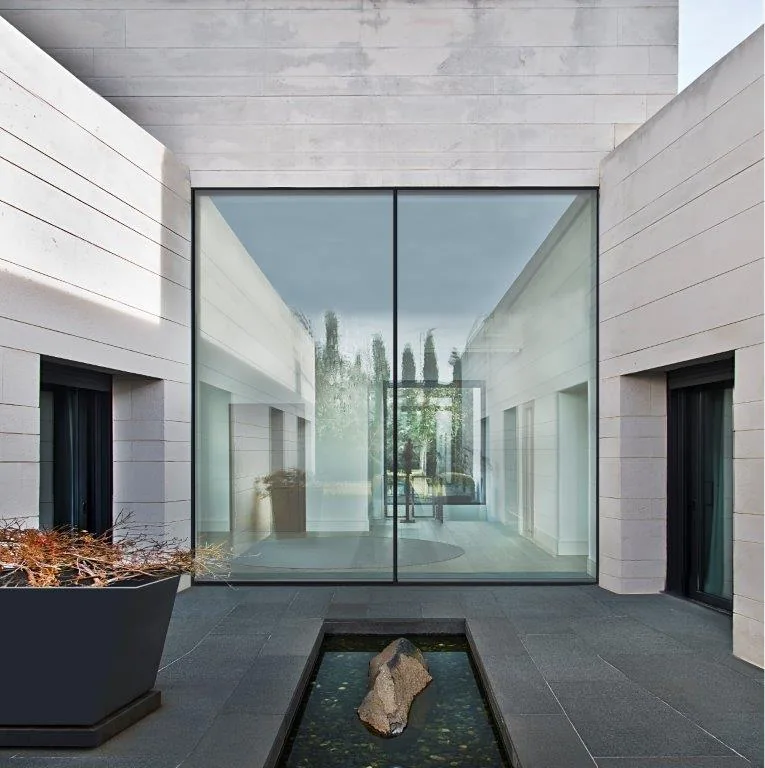
Sliding glass doors consist of various essential elements that ensure their functionality and durability. Understanding these components helps in selecting the right door for specific needs.
Glass Panels
The glass panels are the primary feature of sliding glass doors, providing visibility and natural light. Typically, these panels are made of tempered glass for increased strength and safety.
Tempered glass is resistant to breakage and shattering, making it a preferred choice for these doors. The thickness of the panels usually ranges from 1/4 inch to 1/2 inch, with energy-efficient low-E coatings available to minimize heat transfer.
These coatings also protect against ultraviolet rays, reducing fading inside the home. Options include clear, frosted, or tinted glass, allowing homeowners to choose based on privacy and aesthetic preferences.
Frames
Frames are critical for supporting the glass panels and maintaining the structure of sliding glass doors. They are commonly made from aluminum, vinyl, or wood, each offering distinct advantages.
Aluminum frames are lightweight and resistant to rust, making them ideal for various climates. Vinyl frames provide excellent insulation and require less maintenance, while wood frames offer a classic and natural appearance.
Proper framing is essential to prevent warping, which can lead to operational issues. Additionally, frames should have adequate weather stripping to ensure energy efficiency and protect against drafts.
Tracks
Tracks are vital for the smooth operation of sliding glass doors. Typically made from durable materials like aluminum or stainless steel, they guide the glass panels’ movement.
There are two primary types of track systems: recessed and surface-mounted. Recessed tracks are built into the floor for a streamlined appearance, while surface-mounted tracks are attached above the door frame.
Proper alignment of tracks is crucial for preventing jams and ensuring smooth operation. Maintenance includes regular cleaning to remove dirt and debris, promoting longevity and ease of use.
Rollers
Rollers support the weight of the sliding glass panels and enable smooth movement along the tracks. They are designed to handle significant weight and are often made from durable materials like nylon or stainless steel.
Quality rollers will minimize wear on the tracks and provide a quieter operation. It is important to ensure that the rollers are appropriately sized for the door panel’s weight and dimensions.
Regular maintenance is necessary to ensure optimal performance. This includes lubrication and inspection for wear, as faulty rollers can lead to operational challenges.
Locking Mechanisms
Locking mechanisms are essential for the security of sliding glass doors. They come in various styles, including hook locks, mortise locks, and surface-mounted locks.
A multi-point locking system is often recommended for enhanced security as it engages multiple points along the frame. Homeowners should prioritize locks that meet current security standards to deter unauthorized access.
In addition to standard locks, slide bolts can provide an extra layer of security. Accessible design and ease of use are vital for both functionality and safety in daily operation.
Material Choices
Selecting the right material for sliding glass doors is crucial for durability, aesthetic appeal, and energy efficiency. Each material comes with specific advantages and considerations that can affect the performance and appearance of the doors.
Aluminum
Aluminum is a popular choice due to its strength and lightweight nature. It is resistant to rust and corrosion, making it suitable for various climates. The material can be finished in various colors and styles, allowing it to blend into different home designs.
While aluminum frames are thin, they provide excellent structural support. They can accommodate large glass panels, maximizing natural light. However, they often have poor insulation properties unless they are thermally broken, which may increase energy costs.
Vinyl
Vinyl sliding glass doors are known for their affordability and energy efficiency. The material offers excellent insulation, minimizing heat transfer and enhancing comfort inside the home. It is also resistant to moisture, making it ideal for areas with high humidity.
Vinyl frames are available in various colors and finishes. They require minimal maintenance, as they do not need painting and are easy to clean. However, the material may not have the same strength as aluminum or wood, potentially affecting the durability of larger installations.
Wood
Wood provides a classic and warm aesthetic for sliding glass doors. It is a strong material that can be customized with various stains and finishes to match any interior. When properly maintained, wood offers excellent insulation and energy efficiency.
However, wood requires regular maintenance to prevent issues such as warping, rotting, or insect damage. It may be more expensive than other materials, which can be a consideration for budget-conscious homeowners. The longevity and beauty of wood can be significant assets when cared for correctly.
Fiberglass
Fiberglass is an increasingly popular option due to its durability and low maintenance requirements. It is resistant to warping, cracking, and fading, offering a long-lasting solution for sliding glass doors. Fiberglass can be designed to mimic the look of wood while providing superior performance.
The insulation properties of fiberglass are excellent, helping to reduce energy costs. It can withstand harsh weather conditions, making it suitable for diverse climates. However, the initial cost may be higher than vinyl but can result in better long-term savings.
Clad-Wood
Clad-wood sliding glass doors combine the beauty of wood with the durability of exterior cladding, usually aluminum. This design offers the warmth and aesthetics of wood inside while providing an exterior that resists the elements. The maintenance is reduced since the exterior does not need painting.
This material choice provides excellent insulation and strength. Homeowners benefit from the design flexibility and energy efficiency. However, the initial investment can be higher than standard wood doors, which may be a consideration for some buyers.
Energy Efficiency
Sliding glass doors can significantly contribute to a home’s energy efficiency. Key factors include thermal insulation, energy ratings, and glazing options that impact heat transfer and overall energy consumption.
Thermal Insulation
The thermal insulation of sliding glass doors determines how much heat escapes or enters a home. Effective thermal insulation reduces heating and cooling costs by maintaining consistent indoor temperatures.
Key Features:
- Insulated Frames: Frames made from materials like vinyl or fiberglass offer better insulation compared to aluminum.
- Weatherstripping: Properly installed weatherstripping minimizes drafts, preventing energy loss.
- Dual-Pane Glass: Double or triple glazing enhances insulation by trapping air between the panes, which acts as a barrier against heat transfer.
Selecting doors with these insulation features can demonstrate significant energy savings over time.
Energy Star Ratings
Energy Star ratings provide an easy way to identify energy-efficient sliding glass doors. Products that meet Energy Star criteria are tested for performance in different climates.
Rating Criteria:
- U-Factor: Measures heat transfer; lower values indicate better insulation.
- Solar Heat Gain Coefficient (SHGC): Indicates how much solar radiation is admitted; lower values reduce unwanted heat gain.
- Visible Transmittance (VT): Reflects how much light enters; higher values allow natural lighting without compromising efficiency.
Choosing Energy Star-rated doors can lead to lower energy bills and a reduced environmental footprint.
Glazing Options
The choice of glazing significantly influences the energy efficiency of sliding glass doors. Different glazing techniques can enhance insulation and reduce energy consumption.
Common Glazing Methods:
- Low-E Coatings: These coatings reflect heat while allowing light, reducing energy loss during winter and minimizing heat gain in summer.
- Argon or Krypton Gas Fill: Inert gases between glass panes improve thermal performance by reducing convection and conduction of heat.
- Tinted Glass: Provides shade and reduces glare, which can lower cooling costs during warm months.
Selecting the right glazing option can improve energy efficiency while maintaining aesthetics and comfort.
Design and Aesthetics
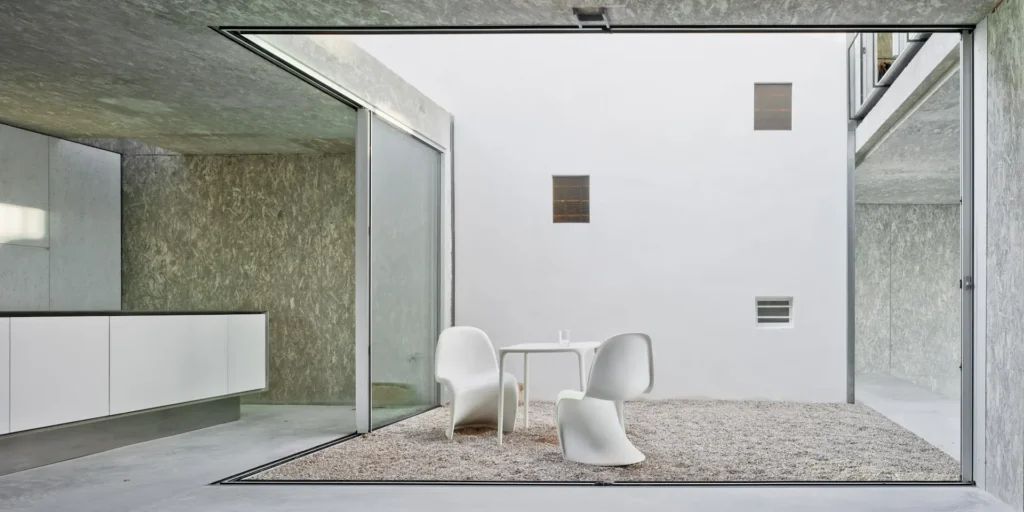
Sliding glass doors offer a blend of functionality and style, enhancing the appearance of residential and commercial spaces. The aesthetic options range from contemporary to traditional, allowing homeowners to select designs that complement their interiors and exteriors. Customizable features further expand the design possibilities.
Contemporary Styles
Contemporary sliding glass doors are characterized by clean lines and minimalistic designs. They often feature large glass panels that allow natural light to flood interior spaces while providing unobstructed views.
Key elements include:
- Framing Options: Sleek aluminum or vinyl frames that provide a modern look.
- Energy Efficiency: Low-emissivity (Low-E) glass can enhance overall thermal performance.
- Operation Mechanism: Smooth gliding systems that promote ease of use.
These doors can be installed in various settings, from urban condos to modern homes, adding a stylish touch to any space.
Traditional Styles
Traditional sliding glass doors often incorporate classic architectural elements that enhance their charm. They may showcase detailed woodwork or divided lites to evoke a timeless feel.
Features include:
- Material Choices: Wood frames that bring warmth and elegance.
- Design Variations: Options such as French-style sliding doors for a chic appearance.
- Decorative Hardware: Antique or ornate handles to enhance traditional aesthetics.
These doors blend seamlessly with historical and rustic homes, maintaining a cohesive design.
Custom Designs
Custom sliding glass doors allow for personalized touches that reflect individual tastes. Homeowners can work with designers to create doors that match specific dimensions and styles.
Customization options include:
- Unique Shapes: Arched or angled designs to fit distinctive architectural styles.
- Finishes and Colors: Wide range of finishes, from matte to glossy, in multiple colors.
- Security Features: Enhanced locks and other safety measures tailored to preferences.
These doors not only serve a practical purpose but also become a focal point in home design, enhancing both beauty and functionality.
Installation Process
Installing sliding glass doors requires careful attention to measurements, a systematic approach, and the right tools. Properly executing this process will ensure functionality and enhance aesthetics.
Measuring and Sizing
Accurate measurements are crucial for a successful installation. Start by measuring the height and width of the opening where the sliding glass doors will be placed.
Use a tape measure to determine:
- Width: Measure at three points—top, middle, and bottom. Choose the narrowest measurement.
- Height: Measure from the top of the opening to the floor at both sides.
Consider the frame size of the door unit and any obstruction like electrical outlets or moldings that may impact the installation. It is wise to account for a bit of clearance for leveling adjustments. Before purchasing doors, confirm these measurements to ensure a proper fit.
Step-by-Step Installation
Prepare the Opening: Clear debris and ensure the threshold is level. If replacing old doors, remove them carefully.
Position the Frame: Set the door frame into the opening. Ensure it is level and plumb using shims for adjustments.
Secure the Frame: Fasten the frame to the wall using screws. Check alignment again, ensuring the frame is square.
Install the Track: Attach the top track to the frame. Ensure it is straight for smooth door operation.
Hang the Doors: Lift the doors onto the track, ensuring they glide smoothly.
Install Bottom Rollers: Secure bottom rollers into the door frame. Adjust as needed.
Add Weatherstripping: Install weather seals to protect against drafts and moisture ingress.
Tools and Equipment Needed
A successful installation requires specific tools and equipment. Here is a list of essential items:
- Tape Measure: For accurate measurements.
- Level: To ensure everything is straight.
- Screwdriver/Drill: For securing screws.
- Shims: For adjusting frame alignment.
- Utility Knife: Useful for cutting weatherstripping.
- Safety Glasses: Protection during installation.
- Pry Bar: For removing old doors if necessary.
Having these tools at hand will facilitate a smoother installation experience. Each item plays a critical role in ensuring the sliding glass door is installed correctly and operates properly.
Maintenance and Care
Proper maintenance and care of sliding glass doors ensures their longevity and smooth operation. Attention to cleaning, regular maintenance, and addressing issues promptly is essential for optimal performance.
Cleaning Guidelines
To clean sliding glass doors effectively, use a mixture of mild dish soap and warm water. A soft cloth or sponge is recommended to avoid scratching the surface. For tougher spots, a non-abrasive cleaner can be employed.
Cleaning Steps:
- Wipe down the glass with the soapy solution.
- Rinse with clean water to remove soap residue.
- Dry the glass with a microfiber cloth for a streak-free finish.
For the tracks, remove debris using a vacuum or a soft brush, followed by a damp cloth. Regular cleaning prevents dirt buildup, which can interfere with smooth operation.
Regular Maintenance
Regular maintenance includes lubricating the rollers and tracks of the sliding door. A silicone-based lubricant is ideal, as it repels moisture and prevents rust.
Maintenance Checklist:
- Inspect rollers and tracks for wear or damage.
- Ensure the door is aligned properly for easy sliding.
- Check seals and weatherstripping and replace if they show signs of wear.
Perform these checks every six months to prevent issues and prolong the lifespan of the doors.
Troubleshooting Common Issues
Common issues with sliding glass doors can include sticking, misalignment, or drafts. If the door sticks, check for dirt or debris in the tracks.
Steps to Troubleshoot:
- Clean the tracks thoroughly to remove any obstruction.
- For misalignment, adjust the roller screws located at the bottom of the door.
- If drafts occur, inspect seals for gaps and replace as necessary.
Addressing these problems early can prevent further complications and maintain functionality.
Safety and Security
Sliding glass doors can enhance the beauty and functionality of a home, but safety and security must be a priority. Homeowners should consider various features that mitigate risks associated with these doors.
Locking Systems
Modern sliding glass doors come equipped with advanced locking systems. Many feature a latch that locks into place when the door is closed. Multi-point locks provide additional security by locking at multiple points along the frame, reducing the risk of forced entry.
Some systems include a keyed lock for extra security, requiring a key to unlock from the outside. Other options feature smart locks that provide keyless entry, enabling homeowners to control access via smartphones. Regular maintenance of these locks is crucial, as dirt or wear can compromise their effectiveness.
Impact-Resistant Glass
Impact-resistant glass is designed to prevent shattering and break-ins. This type of glass consists of a layer of polyvinyl butyral (PVB) sandwiched between two sheets of tempered glass. The PVB layer holds the glass together if it is broken, minimizing the risk of injury and preventing easy access.
This glass is particularly valuable in areas prone to extreme weather conditions. It can withstand high winds, flying debris, and impacts, providing peace of mind for homeowners. Although it may come at a higher cost, the added safety it offers justifies the investment.
Additional Security Features
In addition to locks and impact-resistant glass, sliding glass doors can incorporate various security features. Security films can be applied to existing glass to enhance its strength against impacts while allowing natural light to enter. Motion sensors and outdoor lighting can further deter intruders.
Installing door sensors that alert homeowners when the door is opened can be beneficial. Additionally, the use of bars or grilles can provide a physical barrier, making unauthorized access difficult. By considering these features, homeowners can significantly improve the safety and security of their sliding glass doors.
Regulations and Compliance
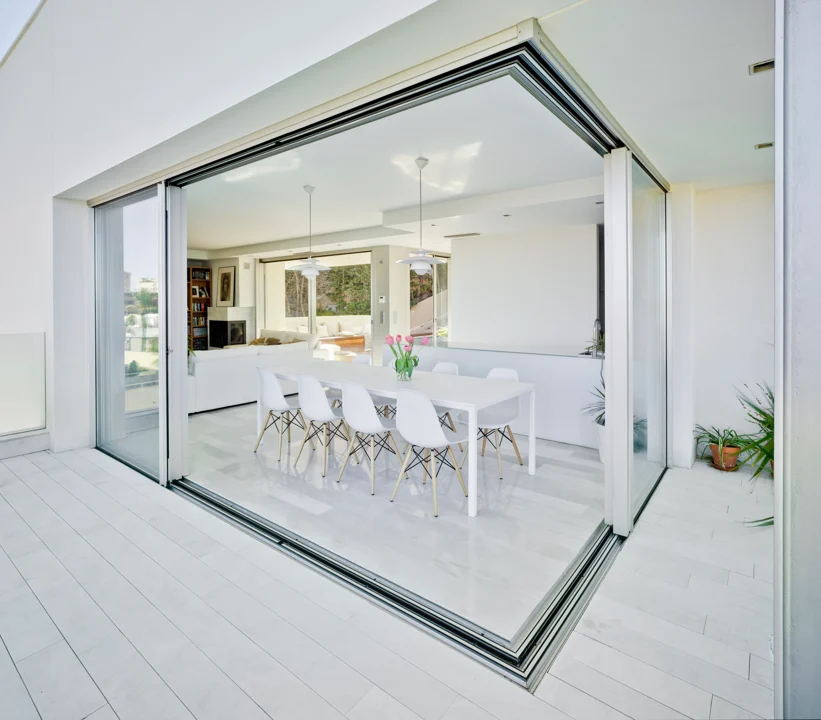
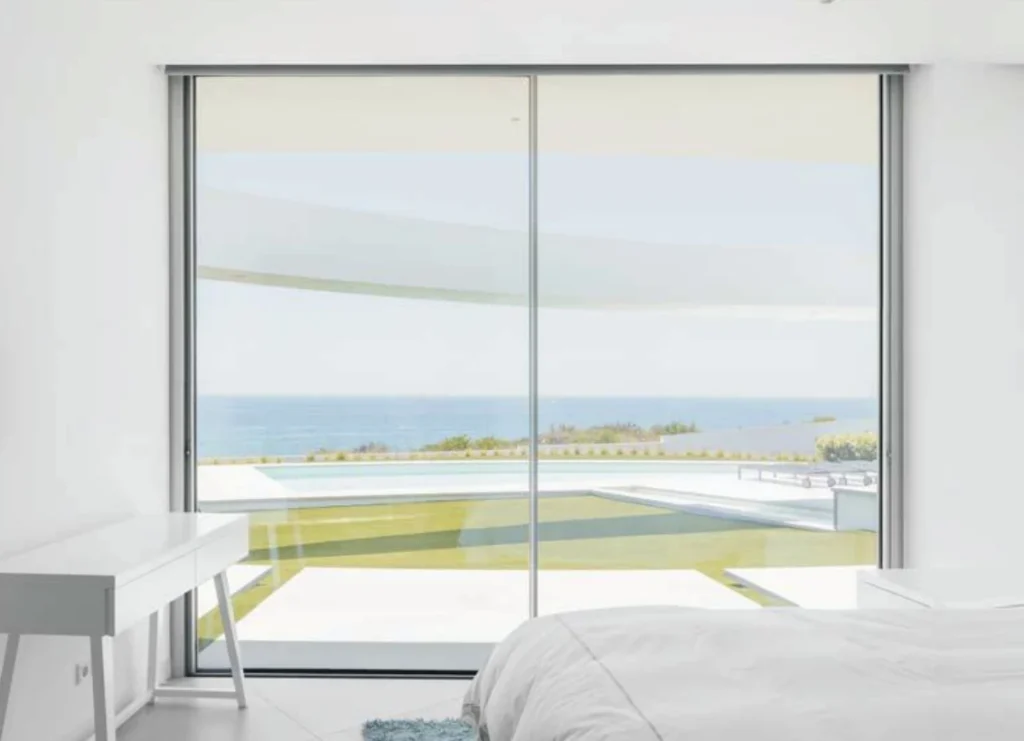
Sliding glass doors must adhere to a variety of regulations and standards to ensure safety and functionality. Compliance with building codes, ADA standards, and local regulations is critical for installation and use.
Building Codes
Building codes govern the structural integrity and safety features of sliding glass doors. These codes vary by region but generally cover aspects such as:
- Materials: Required materials must meet specific strength and safety standards.
- Installation: Proper installation methods are mandated to ensure doors can withstand wind loads and are secure.
- Emergency Egress: Regulations often stipulate that sliding doors must provide a means of escape in case of an emergency.
Homeowners and builders must consult local building codes to confirm that all installations align with legal requirements.
ADA Accessibility Standards
The Americans with Disabilities Act (ADA) sets forth accessibility standards for public facilities, which also applies to sliding glass doors. Key requirements include:
- Clear Opening Width: Sliding doors must have a minimum clear opening that allows wheelchair access, typically 32 inches.
- Operating Forces: The door should be easy to open, requiring no more than five pounds of force.
- Thresholds: Smooth, low thresholds are essential to avoid tripping hazards, ensuring safe access for all users.
Meeting ADA standards is crucial for businesses and public spaces to ensure compliance and enhance accessibility.
Local Compliance Issues
Each municipality may impose additional requirements when it comes to sliding glass door installations. Factors that could affect local compliance include:
- Historical Regulations: Older buildings may have special considerations to preserve their historical integrity.
- Zoning Laws: Local zoning regulations may dictate how sliding doors can be used or installed in certain neighborhoods.
- Security Regulations: Some areas require specific locks or security features to protect against break-ins.
Reviewing local laws before installation is essential to avoid costly fines or modifications later.
Cost Considerations
Evaluating the cost of sliding glass doors involves understanding the price range, assessing the value received for the investment, and exploring any potential financial incentives available.
Price Range
Sliding glass doors can vary significantly in price based on materials, sizes, and installation complexity. Generally, they range from $300 to $3,000. Basic models, made from vinyl, tend to be on the lower end, while high-end options, like custom wood or premium aluminum, elevate the cost.
A standard installation may add another $200 to $600. Homeowners should also account for additional expenses, such as hardware, framing, and any necessary structural modifications. Knowing the factors affecting pricing helps in budgeting effectively for a purchase.
Cost vs. Value Analysis
When analyzing cost versus value, it is essential to consider both immediate and long-term benefits. Sliding glass doors can significantly enhance a home’s aesthetic appeal and improve energy efficiency.
Investing in high-quality doors may have a higher upfront cost but can lead to lower energy bills and increased home value. A well-installed sliding glass door can yield a return on investment (ROI) of up to 80%. This makes the choice of materials and installation method crucial for maximizing value.
Potential Incentives
Homeowners may find various incentives or rebates available when purchasing sliding glass doors. Local utility companies often offer rebates for energy-efficient models.
Additionally, some federal or state programs provide tax credits for energy-efficient home upgrades. This can offset the initial cost significantly. Always check available programs to maximize financial benefits when considering a sliding glass door purchase.
Market Trends
The sliding glass door market is influenced by brand popularity, consumer preferences, and ongoing innovations. Awareness of these trends aids in making informed product choices.
Popular Brands
Key brands leading the sliding glass door market include Andersen, Milgard, and Pella. These companies are recognized for their quality and variety of materials, from wood to fiberglass.
Andersen offers a range of energy-efficient designs and customizable options. Milgard focuses on durability and low maintenance, while Pella is notable for aesthetic designs that complement various architectural styles.
Additionally, brands like Simonton and Jeld-Wen have gained traction, particularly for their cost-effective solutions, catering to diverse market segments.
Consumer Preferences
Consumers prioritize energy efficiency, aesthetics, and ease of use when selecting sliding glass doors. Energy-efficient doors are in high demand, with features like Low-E glass and double glazing being essential for many buyers.
Aesthetic appeal plays a critical role, as customers seek designs that enhance their home’s exterior and interior. Many prefer customizable options to fit their personal style.
Ease of operation and security features are also important. High-quality rollers and locking mechanisms are sought after, ensuring doors operate smoothly while maintaining safety.
Innovations and Advancements
Recent advancements in sliding glass doors include enhanced energy efficiency and smart technology integration. Manufacturers are now using advanced framing materials like fibreglass and vinyl, increasing insulation performance.
Smart sliding glass doors with integrated sensors and mobile controls make convenience a key feature. These innovations allow users to monitor and control doors remotely, contributing to home security.
Sustainability is another trend, with a rise in eco-friendly manufacturing practices. This includes the use of recycled materials and energy-efficient production processes, aligning with consumer demand for environmentally responsible products.
Case Studies
Sliding glass doors are often used in a variety of residential and commercial settings. Several case studies highlight their benefits and applications.
Residential Setting
In a suburban home, sliding glass doors were installed to improve access to a backyard. The homeowners reported increased natural light and a seamless transition between indoor and outdoor spaces. They noted a satisfaction rate of 90% regarding aesthetic appeal.
Commercial Application
A restaurant installed sliding glass doors to enhance the dining experience. This design choice allowed for an open-air feel during summer months. Customer feedback indicated a significant increase in patronage on warm days.
Energy Efficiency
An office building utilized sliding glass doors to maximize energy efficiency. The doors featured double glazing to reduce heat loss. Post-installation data showed a 15% decrease in heating costs during winter months.
Hotel Renovation
During a hotel renovation, sliding glass doors were added to guest rooms. This upgrade provided balconies with stunning views. Guest satisfaction scores improved, particularly in reviews focused on room aesthetics.
These case studies demonstrate the versatility and advantages of sliding glass doors in various environments. The designs not only enhance functionality but also contribute to the overall appeal of spaces.
Conclusion
Sliding glass doors offer both functionality and aesthetic appeal. They serve as an effective transition between indoor and outdoor spaces.
Many homeowners appreciate the natural light these doors provide. Increased illumination can enhance the ambiance of a room.
Advantages:
- Space-saving: Sliding doors do not require space to swing open.
- Accessibility: They offer easy access to patios or balconies.
- Energy Efficiency: Modern options often include energy-efficient glass.
Choosing the right sliding glass door involves consideration of materials and security features. Options include vinyl, aluminum, and wood frames.
Maintenance Tips:
- Regularly clean the tracks to ensure smooth operation.
- Inspect seals for potential wear or damage.
Incorporating sliding glass doors can elevate interior design while promoting a connection with the outdoors. Their versatility makes them suitable for various architectural styles and preferences.
- 4shares
- Facebook0
- Pinterest4
- Twitter0
- Reddit0





